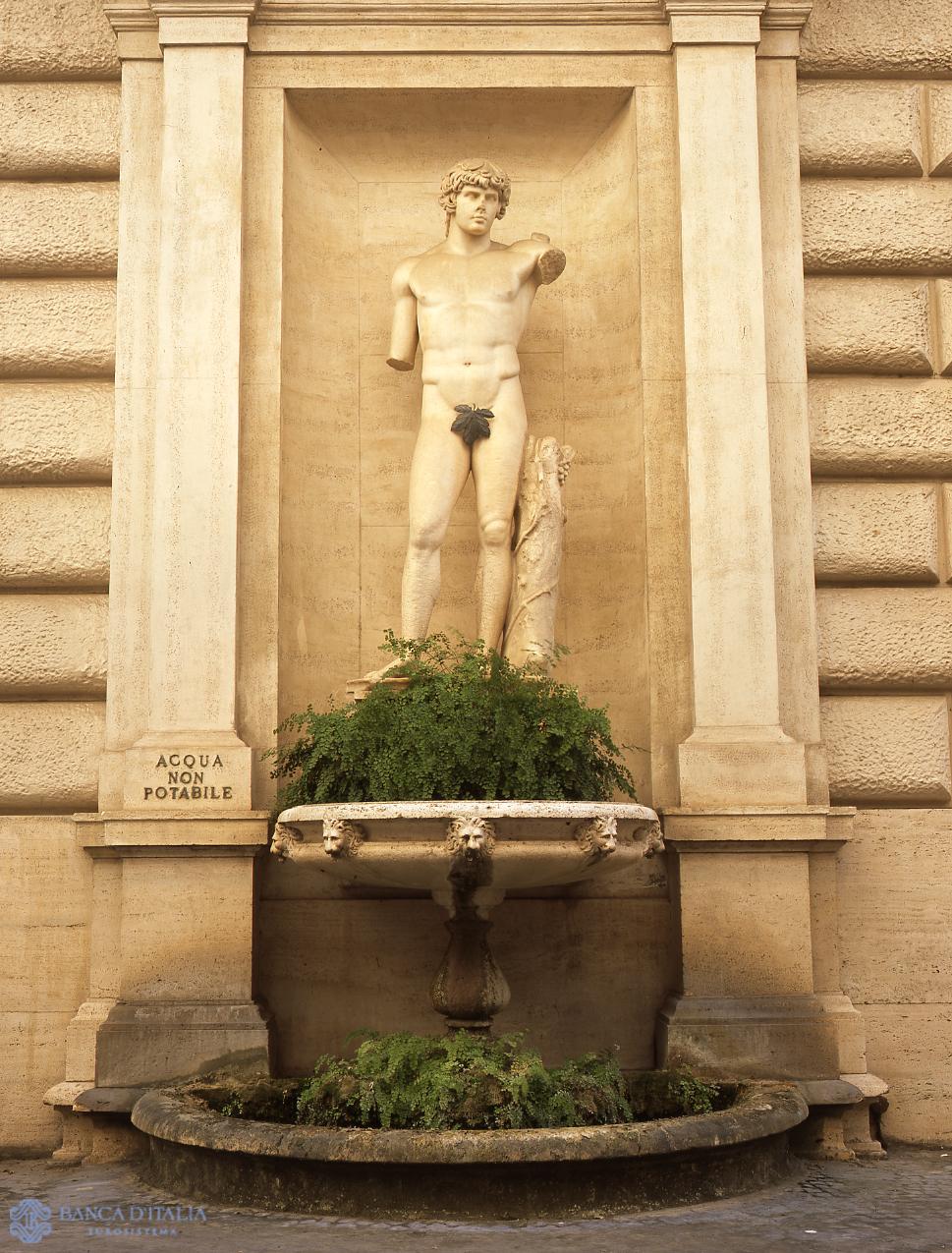In the inner courtyard of Palazzo Koch stands the large statue of Antinous, discovered in 1886 during the construction of the Bank of Italy’s head office. It was sculpted in lunense marble in the second century AD to replicate a portrait of the Emperor Hadrian’s favourite, who drowned in the Nile in October of the year AD 130. After the young man’s tragic death the emperor immediately ordered his deification and, in his memory, had statues and busts of him installed in the most important public buildings throughout the empire. Numerous full-size sculptures of Antinous exist, such as the magnificent example in the Musée du Louvre, found at Hadrian’s Villa, and the one in the Museo Archeologico of Naples, previously in the Farnese Collection which was once housed in the Roman palace of that name.
The Bank’s sculpture, which is larger than life, is missing the whole left arm and right forearm. The slightly twisted pose and graceful body are modelled on a statue of Hermes designed after AD 350, probably by the Greek sculptor Lysippos. The model was chosen to exalt the perfection of Antinous’s body: an impression of movement is conveyed by the faint inclination of the pelvis, the forward bending torso, and the stance with feet apart.
Statua di Antinoo
Statue of Antinous
Sculpture
2th century AD
Portrait

Date
2nd century
Material and technique
Lunense marble
Measurements
Height 228 cm
Compiler
Alessandro Zuccari
